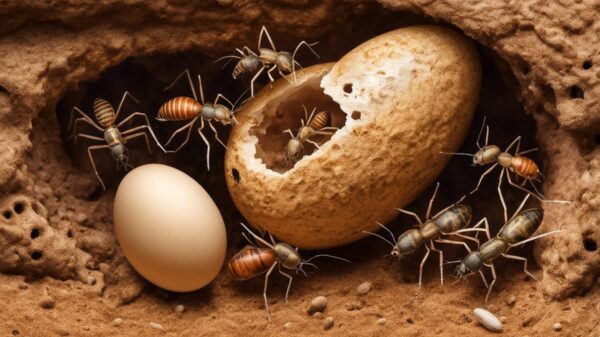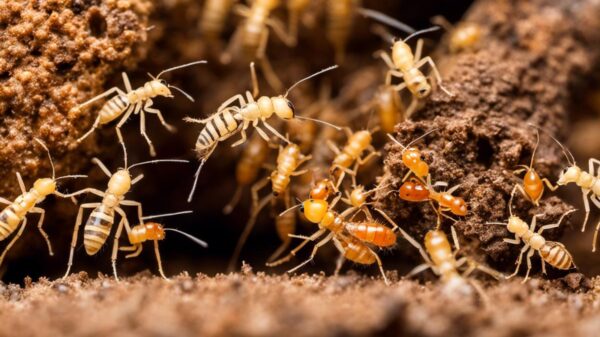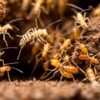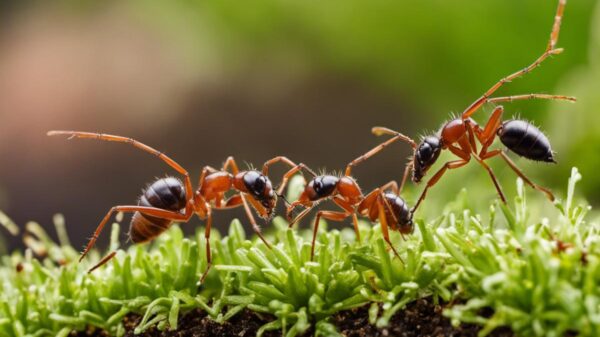If you’ve ever witnessed the ruinous effect of termites on a property, you’d understand the importance of being vigilant about their presence in your home or business. These clandestine creatures are a nightmare for property owners, causing billions of dollars in damage each year in the United States alone. In this essay, we acquaint ourselves with the detailed early warning signs of a termite infestation, enabling us to curb their deleterious action before it spirals out of control. We explore the physical cues like mud tubes and frass, and delve into understanding their behavioral patterns. Also, we shed light on the more subtle ways these pests make their presence known, and provide prevention strategies to stave off this threat.
Physical Indicators of Termite Presence
Visible Physical Signs of a Termites Infestation
Spotting a termite infestation early can save you from significant property damage. The key is to know the crucial indicators that termites may be lurking in your building. One of the most common signs of a termite infestation is the presence of mud tubes. Termites create these tubes as their protective tunnels from their colony to their food source. These small, tube-like structures often appear along the foundation of a building or creeping up the side of walls or other sturdy structures.
Mud tubes are most commonly associated with subterranean termites, a species that need to maintain a certain level of humidity and temperature to survive. You may find these tubes on the ground, tree trunks, or in any other areas where the wood comes into contact with soil. Mud tubes are typically brown, cylindrical, and range in size. If broken open, you might see termites inside, but even abandoned tubes are a significant indicator of an infestation.
Significance of Frass
Frass, or termite droppings, is another common sign of a termite infestation. Termites are clean pests and regularly clean out their nests, pushing out their droppings to keep their homes free of waste. Drywood termites, in particular, are known for leaving behind frass. These droppings are often seen as tiny, hexagonal, wood-colored pellets beneath infested wood. The pile of frass may look like dust or sawdust. It’s an alarm bell of severe termite infestation, and it’s important to act upon discovering it.
Wood Damage Indications
Damage to wood is often one of the final signs of a termite infestation that you’ll notice. Termites consume wood from the inside out, so by the time you notice visible damage, the wood might be extensively hollowed. Notably, different termite species have different patterns of wood destruction.
Subterranean termites devour softwood and hardwood, often leaving only a thin veneer of timber or paint. If you tap on an area damaged by these types of termites, it may sound hollow or papery due to the parts of the timber having been eaten away.
Drywood termites, on the other hand, eat across the grain, excavating large chambers connected by small tunnels. Their feeding habits result in a characteristic appearance of layers in the damaged wood. Tapping the wood may also produce a hollow sound, indicating damage.
Discerning a Termite Infestation
It’s essential to identify the signs of termite infestations early on to prevent extensive property damage. One should remain vigilant for indicators such as mud tunnels, termite droppings (also known as frass), or anomalous wood damage. If any of these signs make you suspect a termite infestation, the best course of action would be immediately contacting a pest control expert to validate your suspicions and handle the problem effectively.
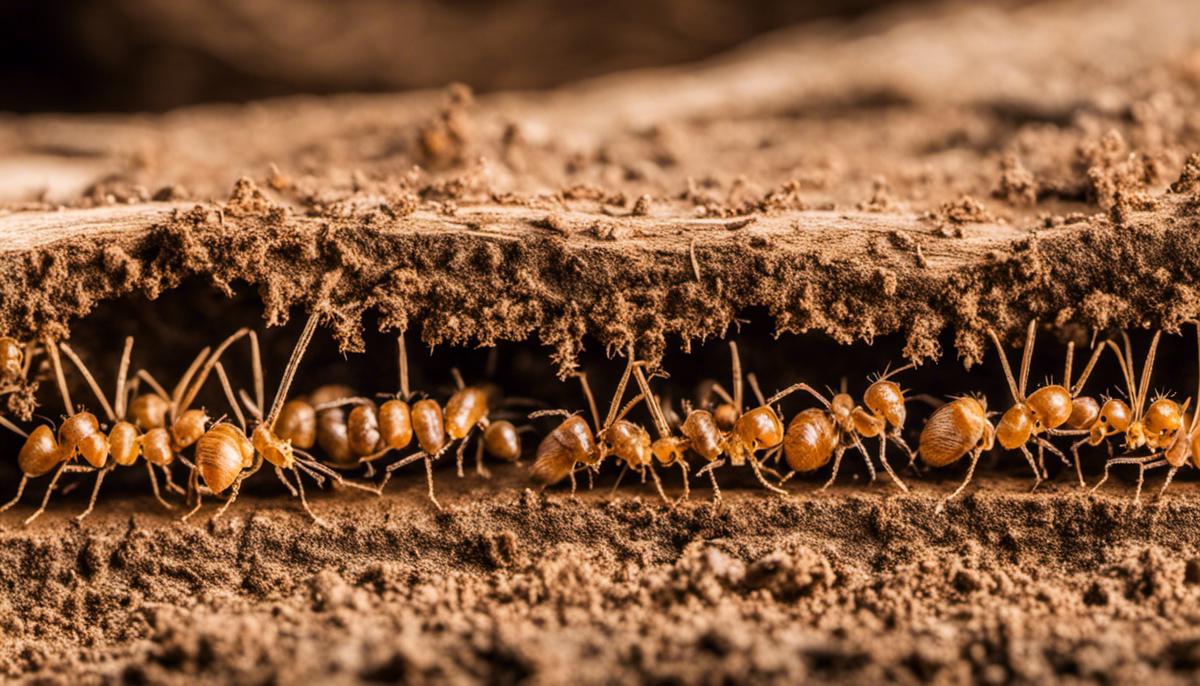
Behavioral Patterns Indicating Termites
Understanding Swarmers, the Flying Termites
Visible swarmers, or winged termites, often present a clear warning of a termite infestation. These creatures are typically spotted around early spring. They grow wings as part of their preparation for the mating season, using this time to leave their home colonies and search for a partner. Their goal is to initiate a fresh colony somewhere. Therefore, discovering swarmers within or near your home usually points to the presence of an active termite colony in the vicinity.
Termite Wings: Telling Traces of Termites
It’s important to note that after swarmers have found a mate, they shed their wings, since they no longer need them. These discarded wings are often another telltale sign of a termite infestation. Typically, these wings are found near windows, doors, or other home-access points. They resemble small fish scales and are all a similar length since termites shed their wings in a uniform manner.
Unusual Pattering Sounds
Termites are known for their peculiar sounds, which serve as another early warning sign of an infestation. Soldiers responsible for safeguarding the termite colony make a clicking sound by banging their heads against the wood or shaking their bodies when their colony is disturbed or threatened. It’s a kind of alarm system to alert other termites. The more substantial the infestation, the louder these sounds will be. Moreover, you may also hear a slight rustling or a hollow sound when you tap on the wood infested by termites as they tunnel very close to the surface.
Termite Behavior: Why Termites Swarm and Make Sounds
Termite behavior, including swarming and making sounds, is part of their biological processes and survival mechanisms. Swarming is a form of reproduction that ensures the survival of the termite species by establishing new colonies. Discarding wings after mating is another part of their life cycle. The unusual sounds made by soldier termites and workers communicate potential danger to the rest of the colony, helping to defend it against threats.
To wrap it up, the emergence of swarmers, the shedding of wings, and the unusual noises made by termites are potential signals of an impending termite infestation. It is crucial to note these indicators and implement pertinent prevention or containment tactics in a timely manner to safeguard your property from possible termite damage.
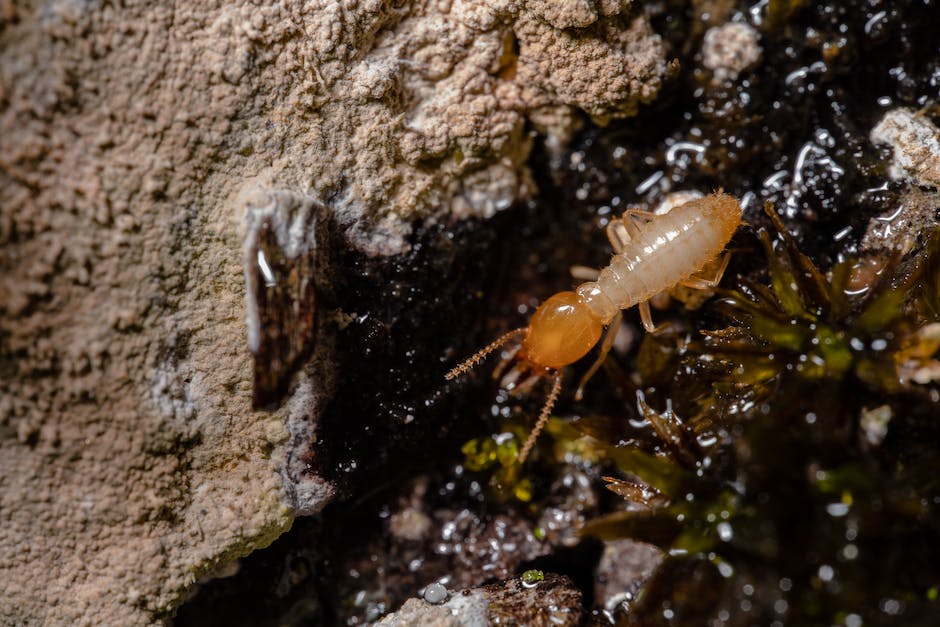
Secondary Signs of a Termite Infestation
Recognizing the Early Warning Signs of a Termite Infestation
Termites, diminutive insects notorious for wreaking havoc on wooden structures, present a severe risk to the structural integrity of our homes and buildings. Early detection of a termite infestation is paramount in order to prevent these tiny intruders from eating away at your wood, flooring, or even your wallpaper. One such warning sign is the peeling of paint, often mistaken for water damage. The reality is termites can create moisture as they munch and carve out tunnels, leading the paint to bubble and peel.
This very moisture might cause wooden doors and windows to warp, hindering their operation. Termites may well be the cause if you spot this issue during periods of dry weather. Adding to this, termites are known to leave behind piles of their own droppings, known as frass, that can resemble tiny mounds of sawdust or coffee grounds. Spotting these small piles can be an early indication of an ongoing termite problem.
Cracks in your home’s foundation can serve as another significant symptom of a termite infestation. Particularly, subterranean termites, one of the many termite species, build their homes within the soil and excavate their way towards wooden structures, leaving behind mud trails or even visible tunnels. If such tunnels reach your home’s foundation, it could lead to noticeable cracking. Therefore, any unanticipated cracks should raise suspicion of termite presence.
Finding small, discarded insect wings near windows, doors, or other entryways in your house is another indication of a termite infestation. Spring is a swarming season for termites when they fly to new areas, shed their wings, and establish new colonies. The discovery of these discarded wings within your home could signal an infestation.
Termite infestations can also be diagnosed by damage to your home’s wooden structures. Termites have a habit of consuming wood from the inside out, causing a hollow sensation when these wooden structures are knocked on.
Early detection of these signs can potentially save homeowners from the extensive property damage often left behind by these pests. Should you come across any of the aforementioned signs, it would be highly advisable to immediately seek professional pest control services for a thorough inspection and subsequent action.
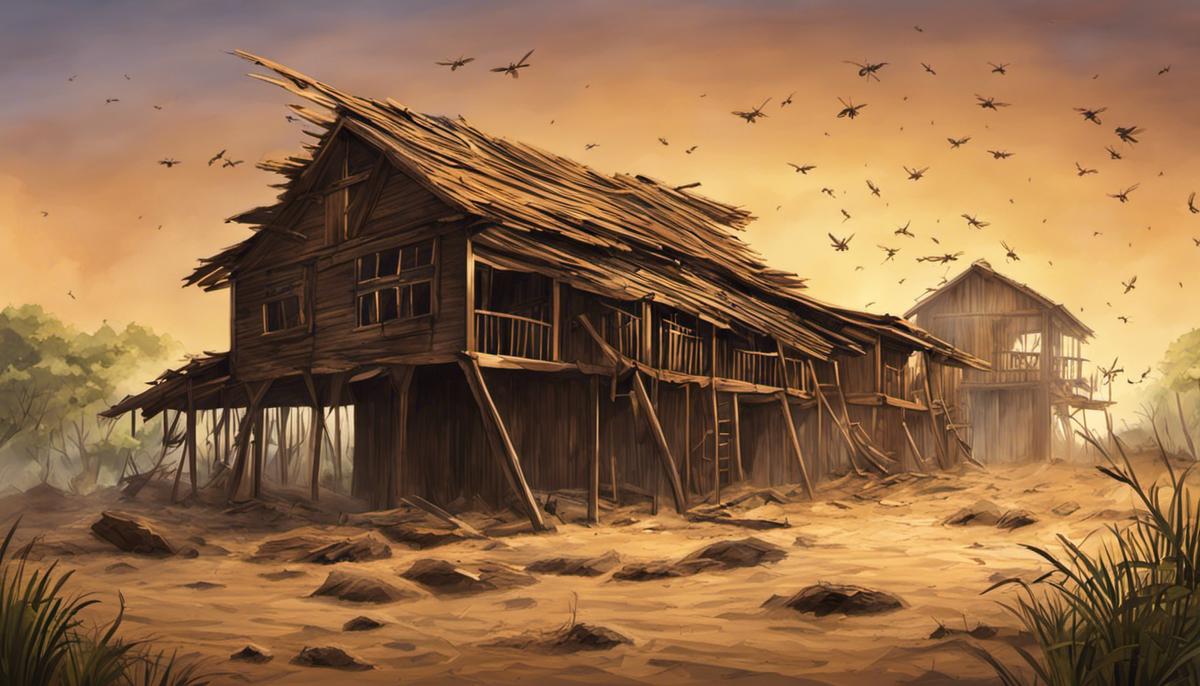
Preventive Measures Against Termites
Preventing Termite Infestations by Limiting Wood-to-Soil Contact
An effective deterrent against termite infestations is minimizing the number of wood-to-soil contacts around your property. Termites harbor a known attraction to wood, and any wood that makes direct contact with soil can provide an express entrance for termites to invade your home. This applies to wooden structures such as decks, porches, or stairs. To minimize the risk of infestation, woodpiles and firewood should be stored a minimum of 20 feet away from the house and elevated at least five inches off the ground.
Regular Pest Inspections
Regular pest inspections by a professional pest control company are highly effective in catching early signs of a termite infestation. These inspections would typically involve checking for signs of termites, such as mud tubes, wings, and damaged wood. Pest control professionals can also check areas that are not easily accessible to homeowners, such as crawl spaces and behind walls. Regular inspections at least once a year can prevent major damage by detecting termites early before they’ve caused significant damage.
Effective Moisture Management
Termites require moisture to survive, so eliminating sources of water around your house can deter termite infestations. This includes repairing leaking faucets, water pipes, and AC units, diverting water away from the foundation, clearing gutters and downspouts regularly to ensure water doesn’t accumulate and pool around your home’s foundation, and ensuring there’s adequate ventilation in crawl spaces, attics, and basements to prevent moisture build-up.
Use of Termite-Resistant Building Materials
Employing termite-resistant building materials can also deter termites. For new construction or if you’re considering major renovations, consider employing termite-resistant building materials such as steel framing, termite-treated wood, or composite materials that termites can’t eat. While these materials can be more costly upfront, they can prevent costly termite damage down the road.
Termite Monitor and Baits Systems
Termite monitoring and bait systems can serve as early warning signs of termite infestation. These systems are placed in the ground around the perimeter of the home and contain a food source for termites. They are regularly checked by pest professionals for signs of termite activity. If termites are found, the monitoring system is replaced by a bait system, which eradicates the colony.
Even with these preventive measures, it’s important to know that a termite infestation can occur in virtually any home, regardless of its construction type or age. Therefore, being mindful and vigilant about the early signs of termite infestation is key to preventing significant damage to your home.

Understanding the early warning signs of a termite infestation can spare homeowners and business proprietors a lot of stress and financial drain. While the more blatant signals like physical damage and swarmers are impossible to ignore, it’s the secondary, more discreet signs that often go unnoticed. It is, therefore, essential to remain watchful for peeling paint, difficulty in opening doors/windows, and cracks in the foundation – none of these should be dismissed as unimportant. Once armed with knowledge, it’s time to act. Proactive steps like proper moisture management, routine inspection, and wise choice in building materials can shield your property from getting infested with these silent destroyers. Always remember, with termites, prevention is far better than cure.



